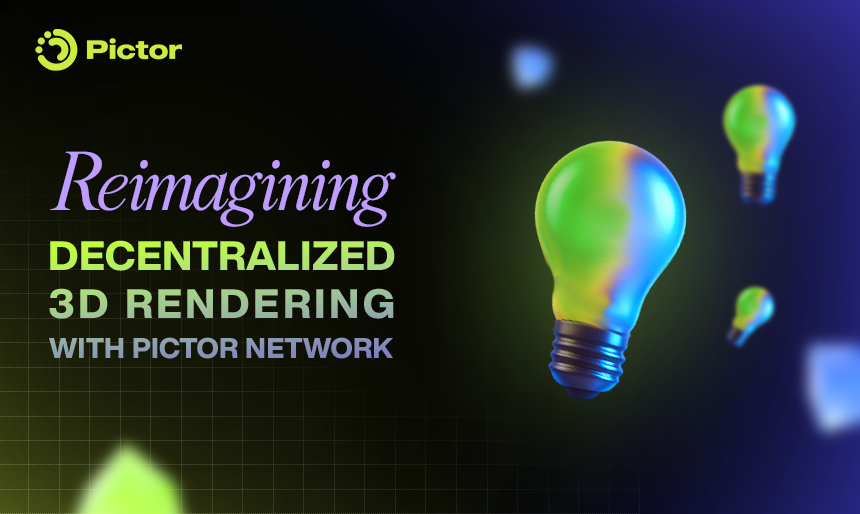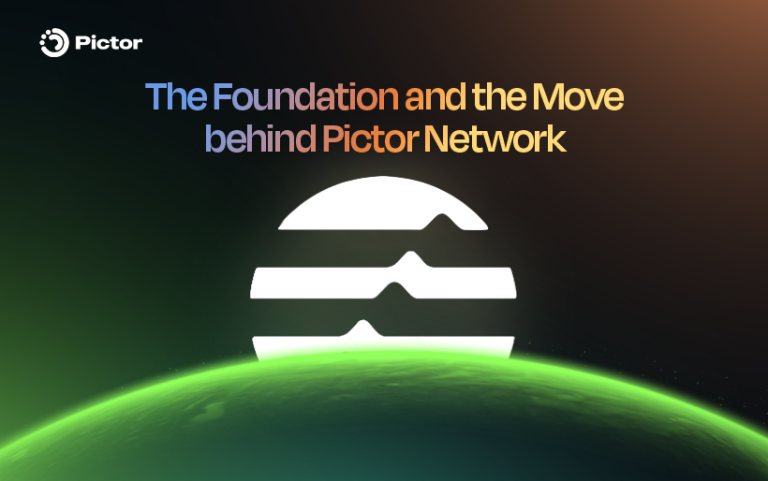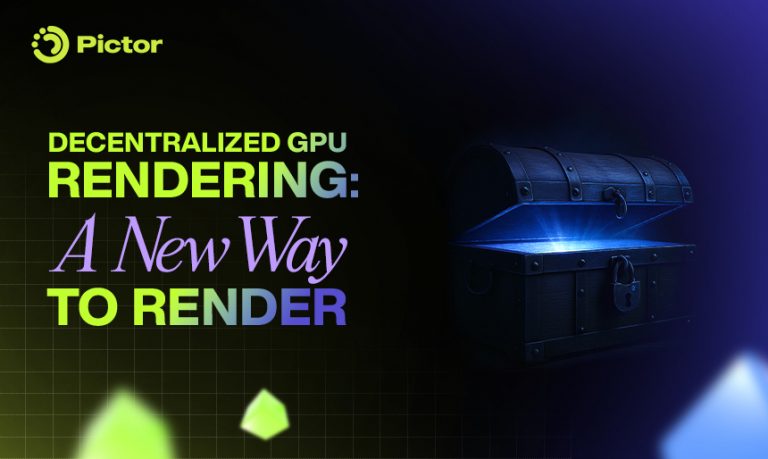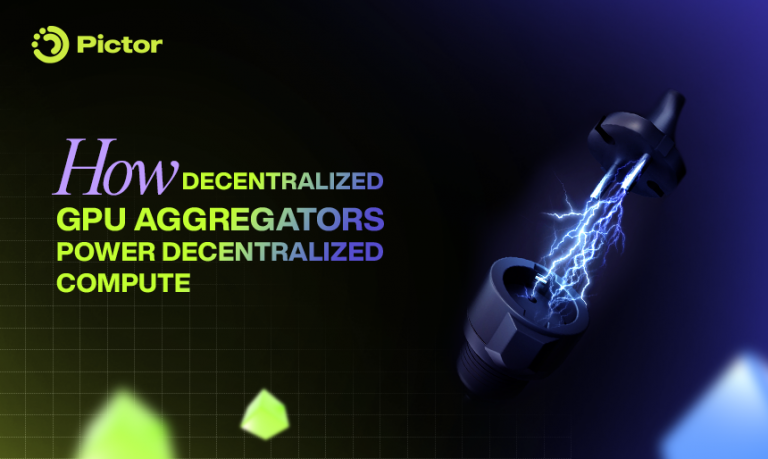“Every great idea in 3D ends the same way — with 3D rendering turning vision into pixels on screen.
But how we get there is about to change.”
1. Why Rendering Still Matters (and Hurts) in 2025
Every creative idea needs to be rendered before it becomes real.
Whether you’re building a cinematic metaverse world, crafting a hyper-detailed product visual, or animating a short film, at some point, your 3D creation needs to be transformed into pixels people can actually see. And that’s where 3D rendering comes in.
So, what exactly is 3D rendering?
Imagine you’ve just built a stunning 3D model of a house.
To turn that digital sculpture into a photorealistic image, your computer has to simulate how light behaves in that scene:
- How sunlight hits the roof,
- How shadows fall under the balcony,
- How indoor lights reflect off polished floors…
That simulation process is called rendering.
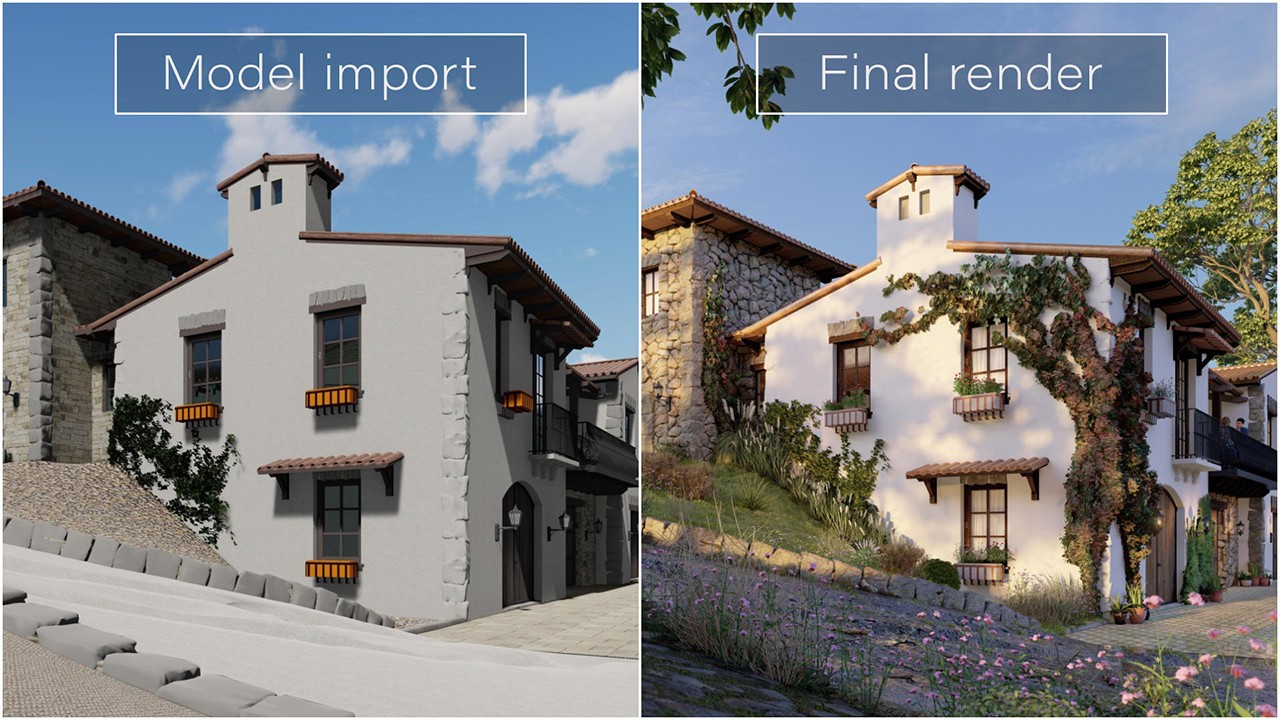
Source: Lumion
It’s not just a camera snapshot. It’s math. Millions of calculations per pixel, across textures, lighting, reflections, shadows, materials, depth of field, and more. The more realistic you want it to look, the more compute power you’ll need.
Offline vs. Real-time Rendering
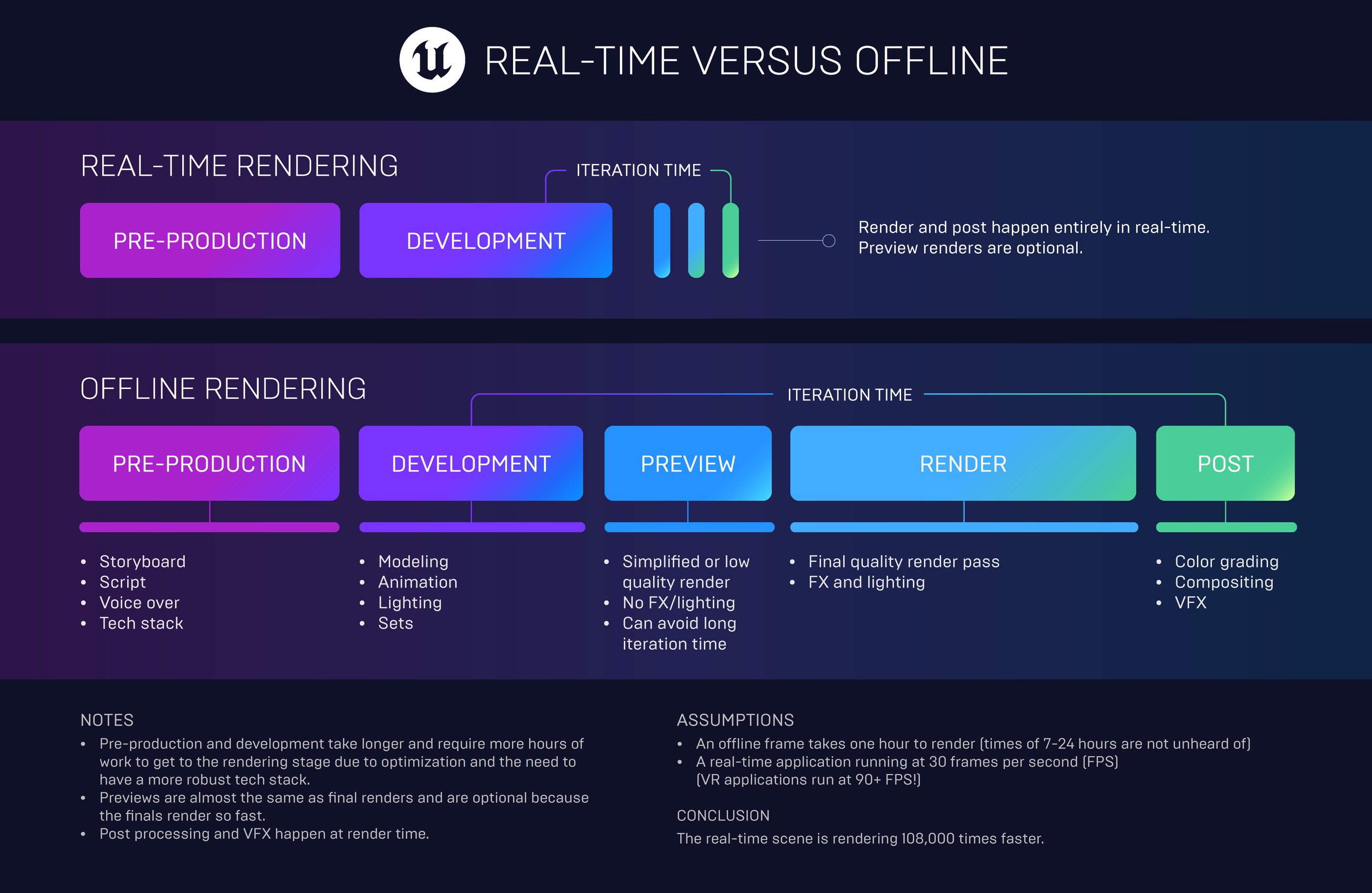
Source: Epic Games
There are two major types of 3D rendering, and they serve different creative goals:
- Offline rendering (also known as pre-rendering) is where scenes are rendered before being viewed. It allows for extremely high detail, photorealistic lighting, and complex effects, but can take minutes (or hours) per frame. It’s used in film, animation, product design, and architectural visualization. Engines like Cycles, Arnold, V-Ray, Octane, Redshift, and RenderMan dominate this space.
- Real-time rendering happens as you interact with the environment. It’s used in video games, VR/AR, and simulations, where each frame must be computed and displayed within milliseconds to feel smooth. While it sacrifices some realism, it prioritizes performance and responsiveness. Engines like Unreal Engine, Unity, and Blender’s Eevee are go-to tools for this category.
Pictor Network starts with offline rendering, because this is where GPU pain is most real.
A single frame can take several minutes to compute, and full-length projects often span thousands of frames. The need for scalable, affordable, and secure GPU access is highest right here, and that’s exactly what Pictor Network unlocks.
Why is rendering still painful in 2025?
Even with all the progress in GPU hardware, AI-assisted tools, and cloud computing, rendering high-quality visuals is still a bottleneck, especially for indie creators, solo artists, or small teams.
- Expensive: Services like AWS or Google Cloud charge by the hour, and rendering jobs can take hours, even days, or weeks.
- Slow: A complex scene with ray-traced lighting can take 10 minutes per frame. A 90-second animation at 24 FPS? That’s 2,160 frames.
- Risky: You have to upload sensitive creative files to third-party servers. There’s no guarantee your files are safe.
- Closed infrastructure: You don’t get to pick what GPUs run your job, how they’re validated, or how the system prices you.
Meanwhile, everything else is going decentralized…
Storage? Filecoin, Arweave, Storj have disrupted centralized silos.
AI? Projects io.net are unlocking idle capacity.
But rendering? Still stuck in Web2 farms.
That’s the gap Pictor Network steps into: A decentralized rendering infrastructure that gives creators access to real GPU power, without the cost, the lock-in, or the compromises.
2. Why Rendering Eats GPUs Alive
Let’s be honest!
Rendering isn’t just a finishing step. It’s where your creative vision gets converted into computation. That’s where GPUs get pushed to their limits.
Rendering is Simulated Physics
When you hit the render button, your machine isn’t “saving an image.” It is simulating how light behaves in a digital world: how it reflects, refracts, scatters, diffuses, and bounces across every surface.
Engines like Cycles, Arnold, Redshift, or Octane use advanced techniques like path tracing, where thousands of rays are fired into the scene and traced through every object, bounce, and shadow to determine the color of a single pixel.
One pixel is already complex. A single 4K image has over 8 million of them.
And the Load Scales Fast
High-quality renders don’t compute each pixel once.
To reduce noise and achieve photorealism, render engines run hundreds or thousands of samples per pixel.
Now, add animation. A 60-second clip at 24 FPS = 1,440 frames. Multiply that by 8 million pixels per frame. Then, multiply again by the sampling rate.
We’re talking trillions of calculations.
Want it to look cinematic? Add:
- Volumetrics (fog, fire, smoke)
- Subsurface scattering (for skin, wax, liquids)
- Displacement maps, 8K textures
- Motion blur, depth of field, ambient occlusion
Even with a beast like the NVIDIA RTX 4090, a complex frame might take minutes to render. And most creators? They don’t have render farms, they’re on single-GPU setups or renting overpriced cloud time, waiting in a queue.
Rendering Becomes the Creative Bottleneck
It doesn’t matter how fast you modeled or animated; when it’s time to render, everything slows down.
It becomes the most expensive, time-consuming, and least scalable part of your workflow. And worst of all? It’s locked behind centralized platforms.
That’s why Pictor Network doesn’t just offer rendering, we rewrite how 3D rendering works.
3. How Pictor Network Decentralizes Rendering Without Sacrificing Trust or Quality
So, how do you solve this GPU-hungry nightmare without owning a render farm?
You break the problem apart, and you decentralize it.
Pictor Network takes everything we just talked about – the pixel-level physics, the long render times, the pressure on creators – and distributes the workload across idle GPUs worldwide, with a protocol designed to incentivize speed, validate accuracy, and protect creative data.
A Web3-native Rendering Workflow
It all starts when a user uploads their render job to the platform: this could be an animation, a 3D product shot, an architectural walkthrough, or a cinematic sequence. Alongside the job comes its metadata: scene files, resolution, renderer settings, and time constraints.
Instead of pushing this to a single cloud GPU, Pictor Network splits the workload and assigns it to multiple available GPUs on the network. These are real machines, operated by GPU owners around the world, who’ve staked $PICTOR tokens to join as workers.
- Jobs are encrypted and stored on decentralized storage.
- GPU providers process the segmented task locally, never seeing or owning your raw files.
- Checker Nodes validate results using metadata, logs, hashes, and optional zero-knowledge proofs.
- Smart contracts handle payment, automatically splitting $PICTOR between workers and validators.
What you get back is the rendered output, delivered fast, verified on-chain, and priced by the market instead of a central authority.
No waiting in farm queues. No overpaying for AWS time. Just real-time GPU power, flowing wherever it’s needed.
Conclusion: 3D Rendering Was the Bottleneck. Now, It’s the Gateway.
For years, rendering has been the final boss of creative production: expensive, slow, and out of reach for most small teams. But in a world where DePIN is unlocking real infrastructure and Web3 creators are demanding sovereignty over their tools, it doesn’t have to be that way anymore.
Pictor Network flips the model.
- Instead of renting compute, we unlock it.
- Instead of trusting cloud platforms, we validate results on-chain.
- And instead of building walls, we build a network, powered by GPUs, governed by incentives, and open to everyone.
From indie studios to AI creators, metaverse builders to NFT artists, rendering just got democratized.
👉 Join the Decentralized Rendering Movement
Whether you’re a 3D artist tired of long waits, a GPU holder looking to earn, or a Web3 builder rethinking infrastructure, Pictor Network is your GPU gateway.
- 🌐 Website: https://pictor.network/
- 🐦 X: https://x.com/pictor_network
- 💬 Telegram Community: https://t.me/pictor_community
- 📢 Telegram Channel: https://t.me/pictor_channel
- 🎮 Discord: https://discord.com/invite/gpcXrp3tvh
- 💼 LinkedIn: https://www.linkedin.com/company/pictor-network
- ▶️ YouTube: http://www.youtube.com/@Pictor_network
Start rendering – Start earning – Start scaling without waiting in line.

